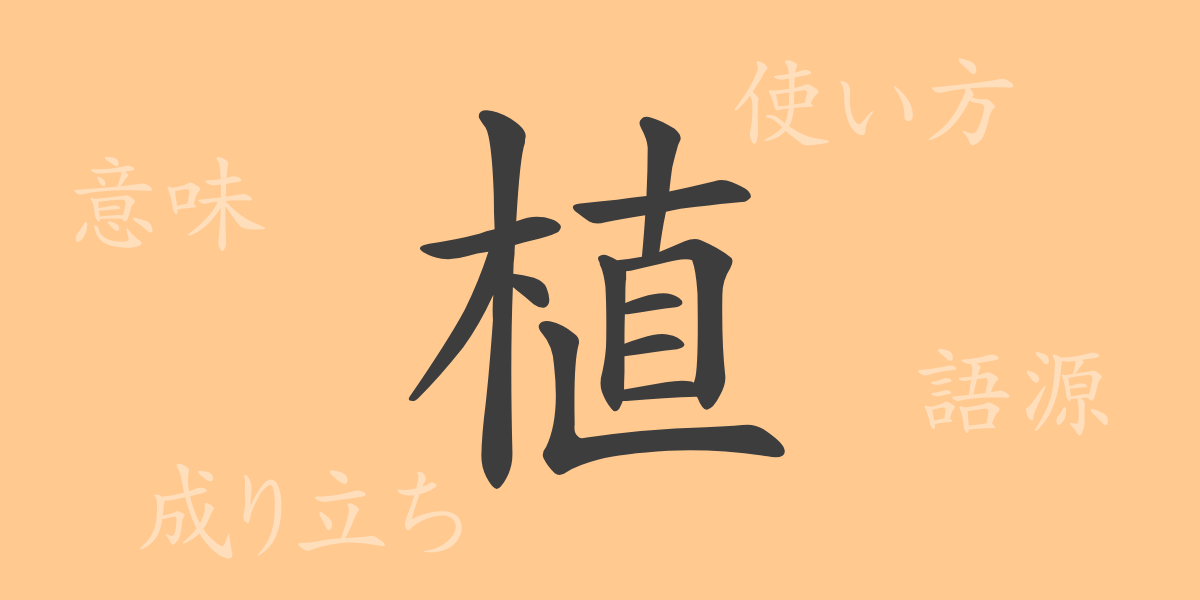The Japanese kanji characters are deeply embedded in culture, each carrying its history and meaning. ‘植’ (しょく) is one such kanji, symbolizing the interaction between nature and humans and is frequently used in our daily lives. This article explores the etymology of ‘植’, its meanings, usage, readings, and the phrases and proverbs that encompass it, delving into the cultural roots of this kanji in Japanese life.
Origins of 植 (しょく)
The kanji ‘植’ originated from ancient China, combining ‘木’ (wood) and ‘直’ (straight), representing the act of planting a tree upright into the ground. This combination reflects the action of planting, which over time evolved to broadly signify setting and nurturing various things.
Meaning and Usage of 植
‘植’ primarily means ‘to plant’, ‘to grow’, and ‘to implant’. While it often directly refers to planting flora, metaphorically, it’s used to denote establishing or embedding ideas and systems. For example, ‘植民地’ (colony) refers to planting one’s culture and system in another land, and ‘植字’ (typesetting) involves setting type in printing.
Readings, Stroke Count, and Radical of 植
Understanding ‘植’ through its readings and structure deepens its significance:
- Readings: On’yomi (おんよみ) ‘ショク’, Kun’yomi (くんよみ) ‘うえる’, ‘うわる’
- Stroke Count: 12 strokes
- Radical: 木部 (きへん)
Phrases, Idioms, and Proverbs Involving 植
‘植’ features in many Japanese idioms and phrases, each reflecting its intrinsic meanings:
- 植木 (うえき): Gardening plants or the act of planting them.
- 植民地 (しょくみんち): Areas where a country establishes control to settle its people and exploit resources culturally and economically.
- 植字 (しょくじ): The process of typesetting in printing using movable type.
- 植え付ける (うえつける): To firmly establish something or deeply imprint an idea in someone’s mind.
- 植物 (しょくぶつ): Generally refers to plants, embodying the concept of entities that can be planted.
Conclusion on 植
The kanji ‘植’ reflects how humans have interacted with nature through its historical usage from planting plants to instilling cultures and values. By understanding the rich meanings embedded in ‘植’, we can rediscover the profound allure of the Japanese language, showcasing growth and development as its emblem.

























